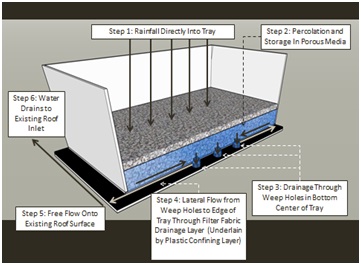Rain Loading Configuration On A Roof

Nominal loads is essentially unaffected.
Rain loading configuration on a roof. Should your roof installation have to be delayed due to poor weather be patient. Each portion of a roof shall be designed to sustain the load of rainwater that will accumulate on it if the primary drainage system for that portion is blocked plus the uniform load caused by water that rises above the inlet of the secondary drainage system at its design flow. Note that although rain loads are covered in ibc section 1611 they were not required to be listed on the construction documents. This is all of the natural stresses imposed upon a roof such as snow loads rain loads and wind loads.
Note that although rain loads are covered in ibc section 1611 they were not required to be listed on the construction documents. This is highly regional as weights of snow for example range from 10 to 300 pounds per square foot based on moisture and volume of the snow. It is not the fault of your contractor and while the delays can certainly be frustrating a contractor who attempts to install a new roof in the rain is going to be compromising the overall integrity of the installation. Asce 7 says that the rain load is 5 2psf in h s h d.
D s depth of water on undeflected roof up to the inlet of the secondary drainage system. Until recently floor live load roof live load roof snow load wind load earthquake design data and flood loads were required to be listed on the construction documents. Wind loads depend on wind speed and can vary as widely as the snow. 1611 1 design rain loads each portion of a roof shall be designed to sustain the load of rainwater that will accumulate on it if the primary drainage system for that portion is blocked plus the uniform load caused by water that rises above the inlet of the secondary drainage system at its design flow.
Special loads such as flood loads ice loads and rain loads are not addressed herein. The key to managing rain loads in buildings is roof drainage including a primary drainage system and a secondary drainage system which is set at an elevation higher than the primary system to drain any water that builds up after the lower system is blocked or not working. The reader is referred to the asce 7 standard and applicable building code provisions regarding special loads. The event that shall be considered is an intense short duration rainfall.
Sloped or not each segment of the roof shall be capable to carry the loading created due to blockage of the primary roof drainage system of that segment plus the load caused by water that rises above the inlet of the secondary drainage system at its design flow rate. 3 2 load combinations the load combinations in table 3 1 are recommended for use with design.













































